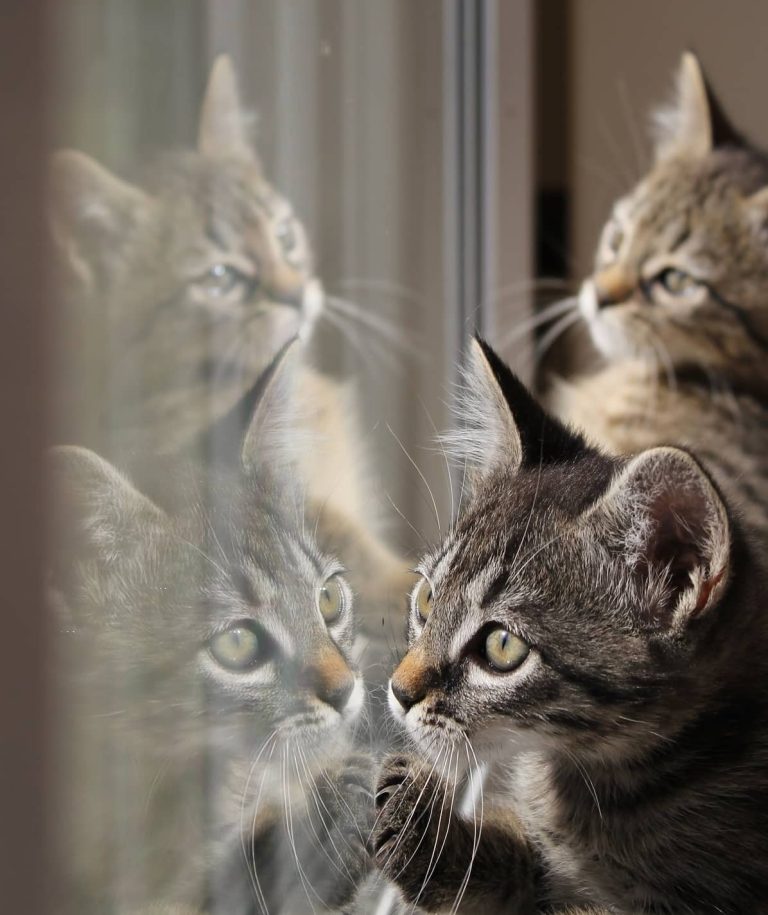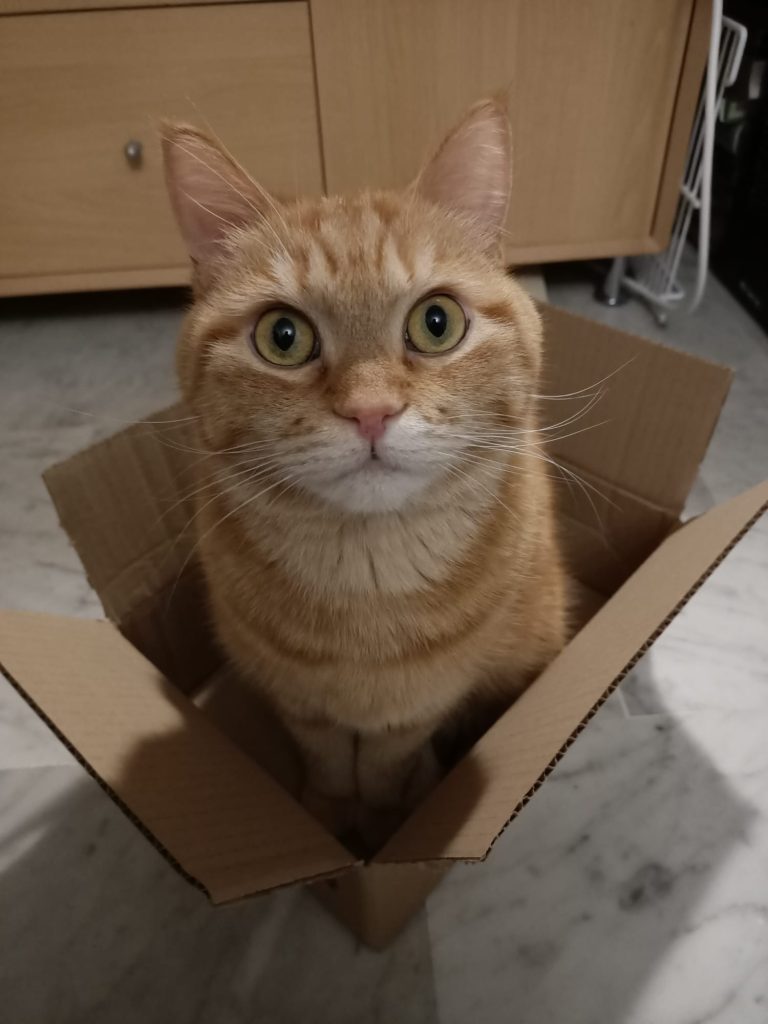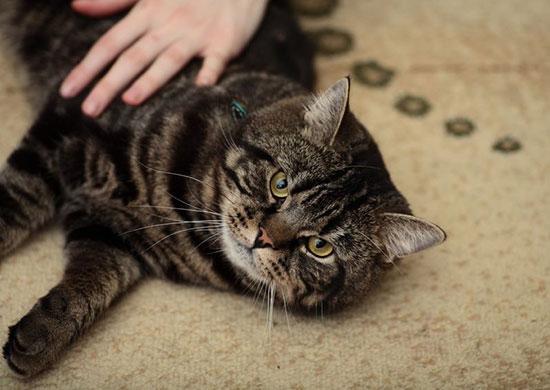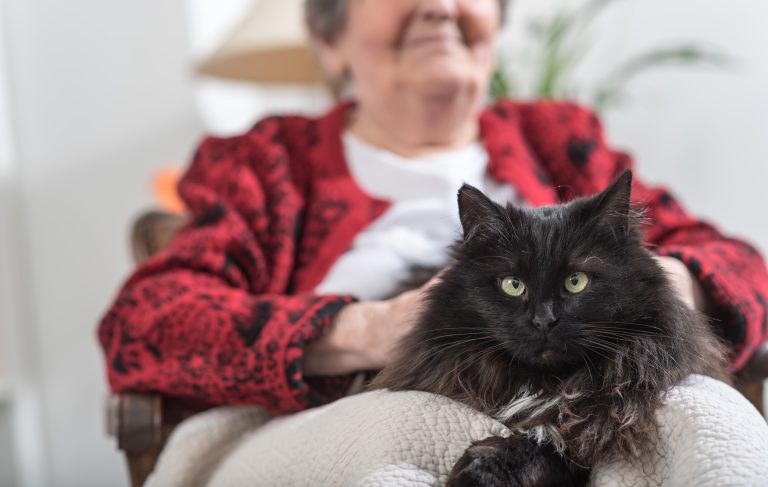Do Cats Inbreed?
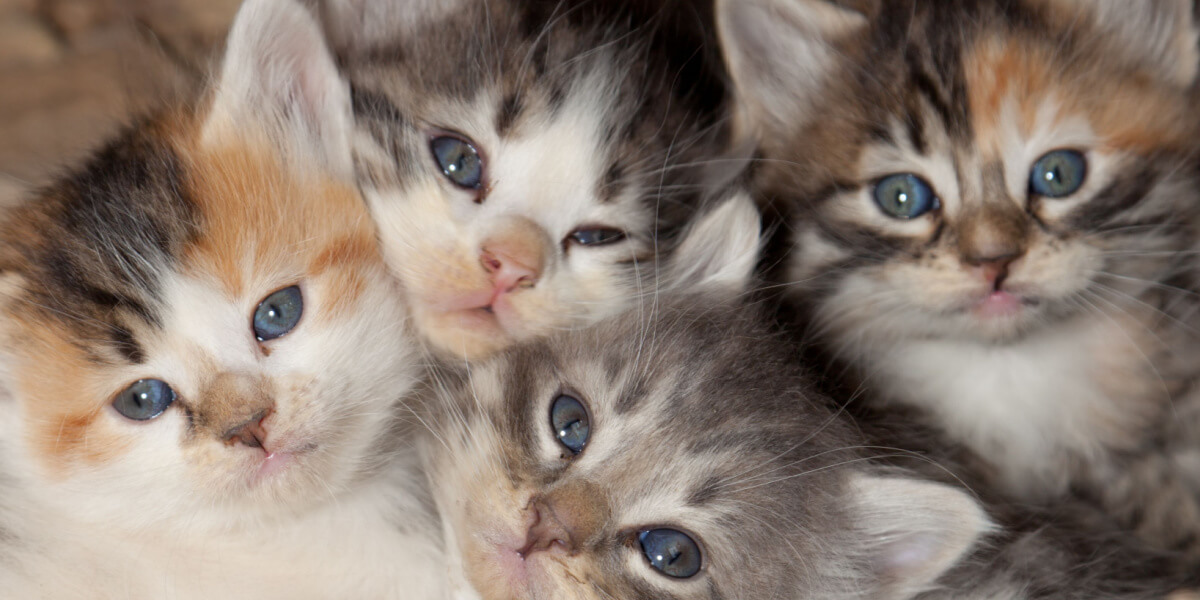
Yes, cats can inbreed, which is the mating of closely related cats resulting in heightened genetic issues. Inbreeding among cats refers to the breeding of cats that share a close genetic relationship, such as siblings or parents and offspring.
This practice can lead to an increased risk of genetic abnormalities and health problems in the offspring. While some breeders may intentionally practice controlled inbreeding to maintain specific traits or characteristics in certain cat breeds, it is generally not advisable due to potential health risks.
Inbreeding can amplify both desirable and undesirable genetic traits, causing issues such as reduced fertility, weakened immune systems, and increased susceptibility to hereditary disorders. Understanding the implications of inbreeding is crucial for responsible cat breeding and overall feline welfare.
Understanding The Genetic Impact Of Inbreeding In Cats
Cats inbreeding can have significant genetic effects, leading to health issues and decreased vitality in feline populations. Understanding the implications of inbreeding is crucial for cat breeders and owners to promote the well-being of their furry companions.
The Basics Of Cat Genetics
Before delving into the complexities of inbreeding in cats, it is essential to first grasp the basics of cat genetics. Cats, like other living organisms, inherit their traits and characteristics through their genetic makeup. These genetics determine the color of their coat, the shape of their face, and even their overall health.
Each cat has a set of genes, which are made up of DNA molecules and are grouped into pairs. These pairs are called alleles, with one allele coming from the mother and the other from the father. The combination of these alleles determines the cat’s phenotypic traits. For instance, a cat may have blue or green eyes depending on the allele it inherits for eye color.
The Definition And Causes Of Inbreeding In Cats
Inbreeding, as the term suggests, is the mating of closely related cats within a specific population or breed. This practice can lead to a higher concentration of shared genes within the offspring, increasing the chances of genetic abnormalities or health issues.
There are various causes of inbreeding in cats, including limited breeding stock, desire to preserve specific traits or characteristics, and even the mere convenience of breeding cats that are readily available within a closed group. Unfortunately, inbreeding is sometimes unintentional and can occur when there is a lack of information about a cat’s lineage or breeding practices.
Inbreeding can result in a reduction of genetic diversity within a population. This is because closely related cats have a higher chance of carrying the same faulty or recessive genes, which can lead to an increased risk of genetic disorders and health problems.
Inbreeding can have significant genetic consequences for cats. Some of the common genetic issues caused by inbreeding include:
- Reduced fertility: Inbred cats may experience difficulties reproducing due to increased rates of infertility.
- Higher prevalence of genetic disorders: Inbreeding increases the likelihood of inheriting genetic disorders, such as heart disease or certain types of cancers.
- Weak immune system: Inbred cats may have weaker immune systems, making them more susceptible to infections and diseases.
- Reduced overall health and vitality: Inbreeding can lead to a decline in overall health and vitality, resulting in shorter lifespans.
It is important to note that not all inbred cats will develop genetic disorders or health problems. Many factors, such as the degree of inbreeding and the presence of specific recessive genes, play a role in determining the potential genetic impact on an individual cat.
Understanding the genetic impact of inbreeding in cats is crucial for cat breeders and owners alike. By recognizing the basics of cat genetics and the potential consequences of inbreeding, responsible breeding practices can be promoted to help ensure the health and well-being of future feline generations.
The Consequences Of Inbreeding In Cats
Inbreeding in cats can lead to serious consequences such as genetic disorders and health issues. It is important to understand the risks associated with cat inbreeding to ensure the well-being of these beloved pets.
The Consequences of Inbreeding in Cats
Health Issues Associated with Inbreeding
Inbreeding, which refers to the mating of closely related cats, can have severe consequences on a cat’s health. Certain health issues are more prevalent in inbred cats due to the concentration of genetic defects. Here are some common health issues associated with inbreeding in cats:
- Cardiovascular Problems: Inbreeding increases the risk of developing heart-related conditions such as hypertrophic cardiomyopathy, which can lead to heart failure and premature death.
- Respiratory Disorders: Inbred cats are more susceptible to respiratory issues like asthma and chronic bronchitis, which can cause breathing difficulties and repetitive coughing.
- Kidney Disease: Inbreeding can result in a higher likelihood of developing kidney diseases like polycystic kidney disease (PKD), where cysts form in the kidneys, impairing their normal function.
Physical Deformities and Birth Defects
Inbred cats are prone to a range of physical deformities and birth defects due to the limited gene pool. Inbreeding magnifies the chances of inheriting faulty genes, increasing the likelihood of these issues:
- Misshapen Bones and Joints: Inbreeding can lead to skeletal abnormalities like malformation of the limbs, spinal deformities, and joint disorders such as luxating patella.
- Cleft Palate and Lip: Inbred cats may be born with cleft palate, a condition where the roof of the mouth or lip does not form correctly, causing difficulties in eating and speaking.
- Eye Abnormalities: Inbreeding increases the risk of developing eye problems like strabismus (crossed eyes), coloboma (an abnormality in the structure of the eye), and progressive retinal atrophy (PRA), leading to vision impairment or blindness.
Weakened Immune System and Increased Disease Susceptibility
One of the consequences of inbreeding in cats is a weakened immune system, making them more vulnerable to various diseases and infections. The limited genetic diversity resulting from inbreeding affects the cat’s ability to fight off illnesses effectively. Some common examples include:
- Feline Immunodeficiency Virus (FIV): Inbred cats have a higher risk of contracting FIV, a viral disease that attacks the immune system, leaving the cat vulnerable to other infections.
- Respiratory Infections: Inbreeding can increase susceptibility to respiratory infections such as feline upper respiratory disease, which can lead to symptoms like sneezing, nasal discharge, and fever.
- Digestive Disorders: Inbred cats may experience digestive issues like diarrhea, vomiting, and inflammatory bowel disease, resulting from a compromised immune system.
Reduced Fertility and Reproductive Problems
Inbreeding negatively affects fertility and reproductive health in cats. The concentration of genetic defects can impair the cat’s ability to reproduce successfully. Here are some reproductive problems associated with inbreeding:
- Infertility: Male and female cats may face infertility issues, making it difficult for them to conceive and produce healthy offspring.
- Stillbirths and Neonatal Mortality: Inbred cats are more likely to have stillborn kittens or experience a high rate of neonatal mortality, where kittens die shortly after birth.
- Pregnancy Complications: Inbreeding can lead to pregnancy complications such as dystocia (difficult or prolonged labor), preterm birth, and higher chances of cesarean sections.
Identifying Signs Of Inbreeding In Cats
Inbreeding, the mating of closely related cats, can lead to a range of health issues. It is important for cat owners and breeders to be able to identify the signs of inbreeding in cats to ensure the well-being of these animals. In this section, we will look at the physical characteristics and behavioral traits that are commonly observed in inbred cats.
Physical Characteristics Of Inbred Cats
Inbred cats often exhibit distinct physical characteristics that can help identify their lineage. These features may vary depending on the severity and duration of inbreeding. Here are some of the common physical signs to watch out for:
- Proportionally larger or smaller size compared to non-inbred cats in the same breed.
- Unusually shaped heads or faces, such as flattened or elongated skulls.
- Abnormal skeletal structure, including shortened limbs or curved spines.
- Asymmetrical facial features, such as unevenly positioned eyes, ears, or nostrils.
- Deformities or abnormalities in the coat, such as missing fur, bald patches, or excessive shedding.
- Dental problems, such as overcrowded or misaligned teeth.
| Physical Characteristic | Significance |
|---|---|
| Proportionally larger or smaller size | Indication of genetic abnormalities |
| Unusually shaped heads or faces | Can affect breathing and overall quality of life |
| Abnormal skeletal structure | Can lead to mobility issues and discomfort |
Behavioral Traits In Inbred Cats
Aside from physical characteristics, inbred cats may display distinct behavioral traits that set them apart from their outbred counterparts. Understanding these behavior patterns can help owners and breeders recognize and address potential issues in inbred cats. Here are some common behavioral traits seen in inbred cats:
- Increased aggression or fearfulness towards humans or other animals.
- Elevated levels of stress or anxiety, leading to excessive grooming, self-injury, or compulsive behaviors.
- Reduced cognitive abilities, including difficulties in learning new tasks or adapting to new environments.
- Higher susceptibility to behavioral disorders, such as obsessive-compulsive disorder or separation anxiety.
- Abnormal social behavior, such as excessive clinginess or extreme aloofness.
If you notice any of these physical or behavioral signs in your cat or a cat you are considering adopting, it is crucial to seek veterinary advice. A professional can provide a thorough examination and provide guidance on proper care and management for inbred cats.
The Ethics And Controversies Surrounding Cat Inbreeding
The Debate On Responsible Breeding Practices
Responsible cat breeding practices have long been a topic of heated debate among experts, enthusiasts, and animal welfare organizations. While breeding can be a way to preserve and enhance desirable traits in certain cat breeds, the ethical implications of inbreeding cannot be ignored.
Inbreeding, which involves mating closely related cats, is often used to maintain specific characteristics or create a certain look in a breed. However, this practice raises concerns about the health and well-being of the cats involved.
Health Risks: Inbreeding can lead to an increased risk of genetic disorders and inherited diseases. When closely related cats are bred together, it amplifies the chances of passing on harmful traits or genetic abnormalities. This can result in a higher prevalence of conditions such as heart defects, kidney disease, and respiratory issues.
Reduced Genetic Variation: Inbreeding reduces genetic diversity within a breed. This can lead to a limited gene pool, making the breed more susceptible to diseases and reducing its ability to adapt to changing environments. It also increases the likelihood of inheriting undesirable traits, which may negatively impact the cat’s overall health and quality of life.
Deformities and Behavioral Issues: Inbreeding can contribute to physical deformities and behavioral issues in cats. The restricted gene pool may result in physical abnormalities, such as shortened limbs, malformed features, or poor immune systems. Cats bred through generations of inbreeding may also exhibit behavioral problems, including aggression, anxiety, and increased susceptibility to stress.
The Need for Responsible Breeding: It is crucial to promote responsible breeding practices to ensure the health and well-being of cats. This involves considering the potential risks and addressing them through careful selection of breeding pairs, genetic testing, and regular health screenings to minimize the chances of passing on harmful traits.
Legal And Regulatory Considerations
Amid the ethical concerns surrounding cat inbreeding, legal and regulatory considerations also play a significant role in determining its acceptance and control. Various countries and jurisdictions have implemented legislation to regulate breeding practices and protect animal welfare.
Breeding Standards and Codes of Practice: Many cat breed registries and associations have established standards and codes of practice that breeders must adhere to. These guidelines outline the conditions for responsible breeding, including genetic testing requirements, breeding age restrictions, and guidelines for avoiding inbreeding.
Animal Welfare Laws: Animal welfare legislation in many countries aims to protect animals from unnecessary suffering and promote responsible pet ownership. Some jurisdictions have laws in place to address the issue of inbreeding in cats, enforcing penalties or restrictions on breeders who engage in unethical breeding practices.
Health Certification and Licensing: Some countries require breeders to obtain licenses or certifications to ensure compliance with health and welfare standards. These certifications may include proof of genetic testing, health screening results, and adherence to responsible breeding practices. By implementing such requirements, regulators aim to minimize the risks associated with inbreeding and improve the overall health of cat populations.
While legal and regulatory frameworks provide a foundation for responsible breeding practices, ongoing education and awareness are essential to encourage breeders and cat enthusiasts to prioritize the health and well-being of cats over aesthetic considerations.
Preventing Inbreeding And Promoting Genetic Diversity In Cats
Cats inbreed naturally, but it is crucial to prevent it to promote genetic diversity and maintain the health of the species. Genetic diversity boosts immunity and reduces the risk of genetic diseases in cats.
Importance Of Responsible Breeding Programs
Responsible breeding programs play a crucial role in preventing inbreeding and promoting genetic diversity in cats. Inbreeding occurs when closely related cats are mated, leading to an increased risk of genetic disorders and health issues in the offspring. It is essential for breeders to prioritize the health and well-being of their cats by carefully selecting suitable mates.
Responsible breeders understand the importance of maintaining a diverse gene pool within a specific breed. By introducing new bloodlines and avoiding continuous breeding between closely related cats, they contribute to the overall health and vitality of the breed. This ensures that the offspring have a lower risk of inheriting genetic defects and are more likely to thrive in their environments.
Moreover, responsible breeding programs not only focus on genetic diversity but also consider the temperament and characteristics of the cats. By carefully selecting breeding pairs based on traits such as friendliness, intelligence, and overall health, breeders aim to produce kittens with well-rounded personalities and good overall health.
The Role Of Cat Owners In Preventing Inbreeding
While breeders play a significant role in preventing inbreeding, cat owners also have a responsibility to contribute to the overall well-being of the feline community. Whether you have a pedigreed cat or a mixed breed, taking certain measures can help prevent inbreeding and promote genetic diversity.
One of the most effective ways to prevent inbreeding is to spay or neuter your cat. This not only helps control the population but also eliminates the possibility of accidental matings between closely related cats. By ensuring that your cat does not reproduce, you are actively contributing to the prevention of inbreeding and the promotion of genetic diversity.
If you are considering adding a new cat to your household, whether through adoption or purchasing from a breeder, it is essential to research and choose a reputable source. Responsible breeders are committed to preserving the breed’s genetic health and will provide documentation of proper health testing and pedigree information.
Furthermore, it is crucial to understand that cats are not meant to be constantly bred. Allowing your cat to have multiple litters might increase the chances of inbreeding and negatively impact the cat’s overall health. It is best to consult with a veterinarian about the appropriate age for spaying or neutering your cat.
Preventing inbreeding and promoting genetic diversity in cats requires the collective efforts of responsible breeders and cat owners. By prioritizing the health and genetic well-being of cats, we can contribute to a future where felines thrive without the risk of inherited health issues. Through responsible breeding practices and informed decision-making, we pave the way for a healthier, more diverse feline population.

Credit: nypost.com
Frequently Asked Questions On Do Cats Inbreed?
Can Cats Inbreed?
Yes, cats can inbreed if they mate with close relatives like siblings or parents. However, inbreeding can lead to health issues and genetic abnormalities in the offspring, so it is best to avoid such breeding practices.
What Are The Risks Of Cat Inbreeding?
Inbreeding in cats increases the risk of inherited diseases, physical deformities, and reduced overall health. It can also result in weaker immune systems and a shorter lifespan for the offspring. Breeding cats with unrelated partners is recommended to maintain genetic diversity and ensure healthier kittens.
How Does Inbreeding Affect Cat Genetics?
Inbreeding concentrates the genetic material, increasing the chances of inherited disorders being passed down. It can intensify both desirable and undesirable traits in cats, including physical appearance and temperament. However, it also significantly increases the risk of developing health issues in the offspring.
Can Inbreeding Cause Birth Defects In Cats?
Yes, inbreeding can cause birth defects in cats. The genetic abnormalities resulting from inbreeding can lead to physical deformities, cognitive impairments, and a higher risk of various health conditions. Responsible breeding practices should prioritize genetic diversity to reduce the risk of birth defects.
Conclusion
Cats are known for their independent nature and unique behaviors, and inbreeding among cats is a topic of concern for many pet owners. Understanding the implications and consequences of inbreeding is crucial for maintaining the health and well-being of these animals.
This blog post has shed light on the subject, providing valuable insights into the reasons, risks, and prevention methods associated with cat inbreeding. By educating ourselves, we can ensure a healthier future for our feline friends.

